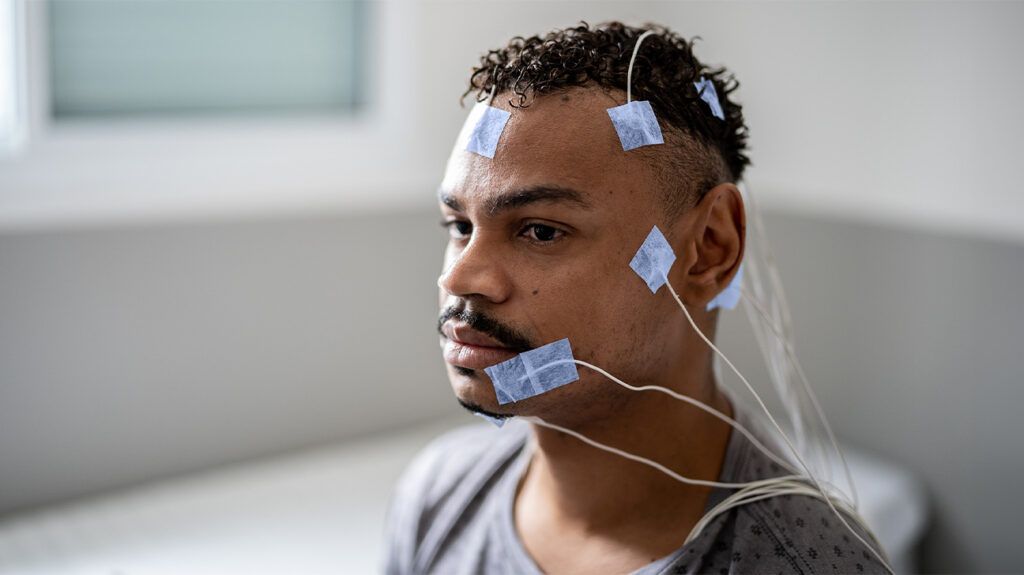Brain stimulation therapies use electrical currents to alter the brain’s activity. They can treat conditions such as major depression and substance misuse disorder. However, side effects such as headaches, dizziness, and memory loss are possible.
Doctors may recommend brain stimulation therapies to treat severe mental health conditions when other treatments, such as psychotherapy and medication, have not helped. Brain stimulation therapies work by increasing or decreasing brain activity.
This article outlines some brain stimulation therapies that the Food and Drug Administration (FDA) has authorized. It also discusses their possible side effects.

Experts are unsure exactly how brain stimulation works, but studies have
Most brain stimulation therapies are noninvasive. They involve passing an electrical current through electrodes attached to a person’s head. The current stimulates areas of the brain to either activate or inhibit them.
Other therapies, such as deep brain stimulation, are invasive. They involve passing an electrical current into the subcortical area of a person’s brain through electrodes surgically implanted into the brain.
Noninvasive brain stimulation therapies do not require anesthesia and surgery, so doctors recommend them more often than invasive techniques.
The following sections describe some FDA-authorized brain stimulation therapies.
ECT is a noninvasive therapy that passes weak electrical impulses through electrodes to cause a brief seizure in the brain. ECT seems to improve mental health symptoms by changing the brain’s chemistry.
ECT sessions take place under general anesthesia, which means a person is unconscious. A muscle relaxant medication ensures they remain still during treatment.
Sessions last 5 to 10 minutes, and doctors may recommend multiple sessions per week. People are typically back to usual a few hours after each session.
How effective is ECT?
ECT is an effective treatment for serious mental health conditions such as major depression and bipolar disorder. According to the National Alliance on Mental Illness, between 70% and 90% of people who receive ECT report improvements in their depression.
Side effects
According to the
- headache
- stomach upset
- muscle ache
- memory loss
- disorientation
- confusion
Memory problems usually improve within weeks of finishing ECT treatment, per the NIMH.
TMS is a noninvasive therapy that uses magnetic fields to stimulate nerve cells in the brain.
During a TMS session, a doctor places an electromagnetic coil on a person’s scalp, near their forehead. The coil directs short magnetic pulses to an area of the brain that controls the person’s mood. If the pulses are rapid, the procedure is known as repetitive TMS (rTMS).
The doctor performing TMS decides how much magnetic energy to use. Each TMS session lasts 40 to 60 minutes. It does not take place under anesthesia, so a person remains conscious. TMS treatment requires multiple sessions over several weeks.
How effective is TMS?
TMS effectively treats conditions such as:
For example, between 30% and 64% of people with depression report improvements in their symptoms after TMS.
Side effects
According to the
- discomfort on the part of the head closest to the magnet
- contraction or tingling affecting the scalp, jaw, or face muscles during the TMS session
- mild headaches
- brief lightheadedness
- dizziness
There is also a chance that TMS can cause seizures, although the risk is low. Scientists do not know about potential long-term side effects of TMS.
VNS is an invasive form of brain stimulation therapy that acts on the vagus nerve. This nerve carries electrical signals between the brain and other organs. Treatment with VNS involves doctors surgically placing an electric pulse generator, about the size of a stopwatch, in the upper left part of a person’s chest.
When the device generates an electric pulse, it stimulates the vagus nerve. The pulses travel through this nerve, into the brain stem, and throughout the brain, altering how brain cells function.
How effective is VNS?
There is not much scientific research about the effectiveness of VNS. Some research suggests that between 50% and 70% of people with treatment-resistant depression may gain some benefit from VNS. It can also benefit people with seizure disorders. However, more research is necessary.
Side effects
According to the
- discomfort or tingling near the device
- voice changes
- voice hoarseness
- cough or sore throat
- neck pain
- headaches
- breathing problems, which may worsen during exercise
- difficulty swallowing
- nausea
- vomiting
Some people may also experience complications from the surgery, such as pain and infection.
DBS is an invasive therapy that involves surgeons implanting tiny electrodes into the brain. These electrodes connect to a small electric pulse generator, which surgeons implant inside a person’s chest.
Doctors may recommend DBS to treat tremors in Parkinson’s disease, dystonia, and treatment-resistant epilepsy. In some cases, doctors also recommend DBS for treatment-resistant OCD.
How effective is DBS?
DBS can
Side effects
Possible side effects of DBS include:
- bleeding in the brain
- stroke
- discomfort, pain, or infection around the incision or device
- headaches
- disorientation
- confusion
- cognitive problems
- lightheadedness
- dizziness
- nausea
- vomiting
- trouble sleeping
- restlessness or agitation
More long-term side effects may emerge as DBS use continues.
Mental health resources
Visit our dedicated hub for more research-backed information and resources on mental health and well-being.
Brain stimulation therapies work by activating or inhibiting areas of the brain using electrical currents. Doctors may recommend brain stimulation when other treatments have been unsuccessful.
Conditions that may improve using brain stimulation include depression, substance use disorder, bipolar disorder, and Parkinson’s disease.
Brain stimulation therapies can cause side effects, such as memory loss and headaches. However, for many people, they can relieve symptoms and improve a person’s quality of life.

